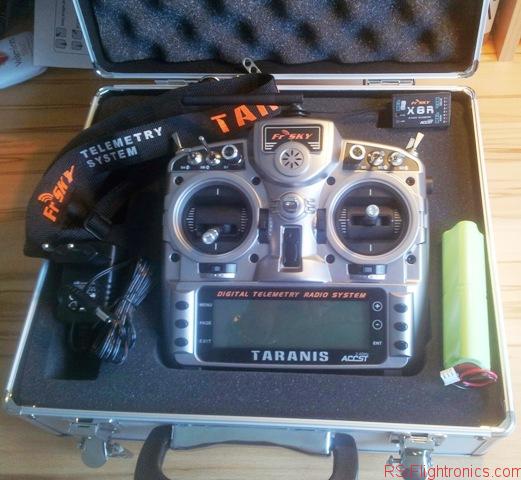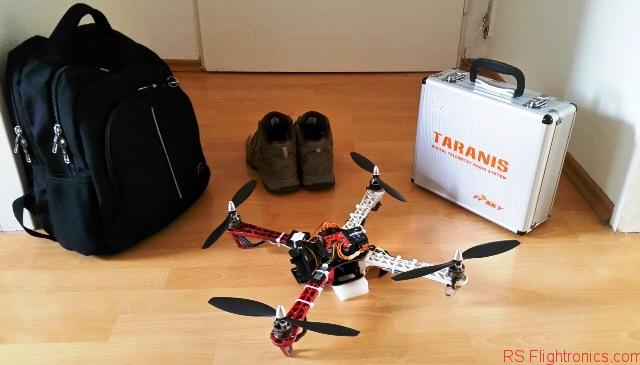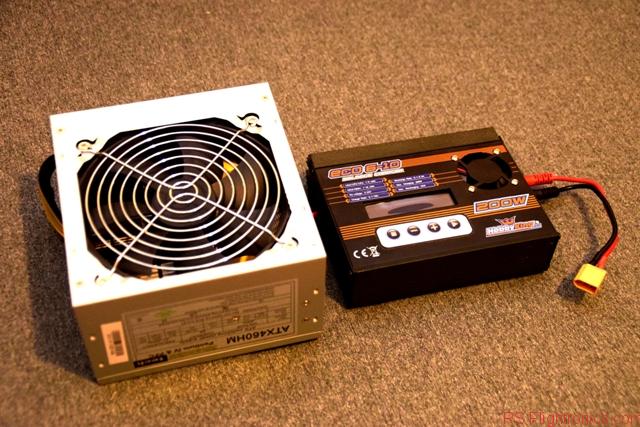I have been there… and I also see many facing the fact that any one willing to take the first steps into the RC hobby will have to do an extensive research, learn new terminologies, the RC basics and also spend hours and hours reading reviews and recommendations and trying to put all together.
If you are one of those that would like to start a build from scratch and you are not sure what is required apart of the model that you want to fly, then this post could be helpful.
Contents
Radio transmitter
One of the first RC basics I wish I have taken seriously was the radio transmitter. I still remember how my first setup fell from the sky as brick because there was a glitch in my transmitter and the receiver didn’t have a fail safe function. After that, I decided that if I were going to stick around this hobby and wanted to save some future frustration, then a logical step would be to invest in a decent radio transmitter.
Transmitter relevant aspects
- Should have enough channels.
- If you are planning a custom quad copter build then at least 5 channels should be considered. The more channels you have, the more possibilities you will be able to cover.
- Mode – “Right or left handed”
- Mode 1 or Mode 2 preference should be already clear. Depending on the transmitter, there are some of them where you can change this configuration.
- Capability of binding with different receivers
- Once you get hooked on this hobby, you will probably want to have different models to fly with. From this perspective, the capability of binding with different receivers is an important factor to have in mind.
- Exchangeable transmitter module
- If this option is present, then you cannot go wrong. Changing a little module you can also cover different band spectrum or communication protocols at a minimal cost is a big plus. You never know what you are going to be flying in few years! 😉
- Variety of receptor modules that are compatible with the transmitter.
- Having a good variety of receptors available in the market with different shapes and features will help you to optimize the final costs of your setup and also will increase the chances to find a receiver that fits your specific needs.
- Community support and documentation
- No one wants to have a product without a community supporting it. Good quality documentation is also key factor that is going to help us when looking for guidance.
- Regular firmware updates
- It is kind of nice to know that the product you bought keeps receiving updates and making it better.
My personal choice
After investigating and doing some research, I come to the conclusion that the FrSky Taranis would be a good choice to fulfill all the items listed above. Of course there were other alternatives in the market, but this was the one that covered the whole check list!
I also like the fact that certain receivers enable the capability of making use up to 16 channels (S-bus). This is great when considering multirotor setup with lot of options to play with.
It has been already three years since I got my Taranis and I am just happy with it. I am glad to see how flexible this transmitter can get when updating its firmware. Just an example: Being capable of updating the firmware of my receivers modules by just using this transmitter and no other tool… priceless!
Battery Charger
It usually makes a great difference when you have an appropriate battery charger. Since this does not belong directly to your flying setup, it is usually left as low priority. Probably after a few months of having started with the hobby, the number of batteries will increase and charging a reasonable number of batteries for a spontaneous flight will be a headache if an adequate charger is missing on your bench.
There are different models in the market, if you are just starting and looking for something affordable you can consider a charger with at least the following features:
- Capability of handling Lipos from 1s up to 4s at least.
- If you want to charge more than one battery at the same time, then the power capabilities of the charger is a relevant aspect! Power is directly proportional to the charger cost.
- Option for balancing, and storage load is a nice plus.
- Monitored output is advised in order to reduce the risk of accidents if something goes wrong during the charging process.
- External power supply
- This reduces the complexity of the charger and therefore its price. Having an external power supply brings you flexibility depending on your power requirements.
- The battery of your car can work as external power supply. Very convenient when you are on the field 😉
My personal choice
Since I didn’t have a power supply that could provide me more than 2A, loading my Lipos was each time slower as I was trying with higher capacities.
Buying a dedicated workbench power supply was just expensive. After doing some research, I found out that other solutions were available. The most convenient was adopting a HK Battery charger with an ATX Switched Power supply. After doing some adaptions to the power supply, I got it working nicely.
It has been already two years since I have adopted this solution and I must say that I am happy with the results, with enough power to load a good bunch of Lipos in a reasonable time for a spontaneous flight!
Please subscribe and keep tuned for further updates! Your comments and questions are always welcome!





Make a more new posts please 🙂
___
Sanny